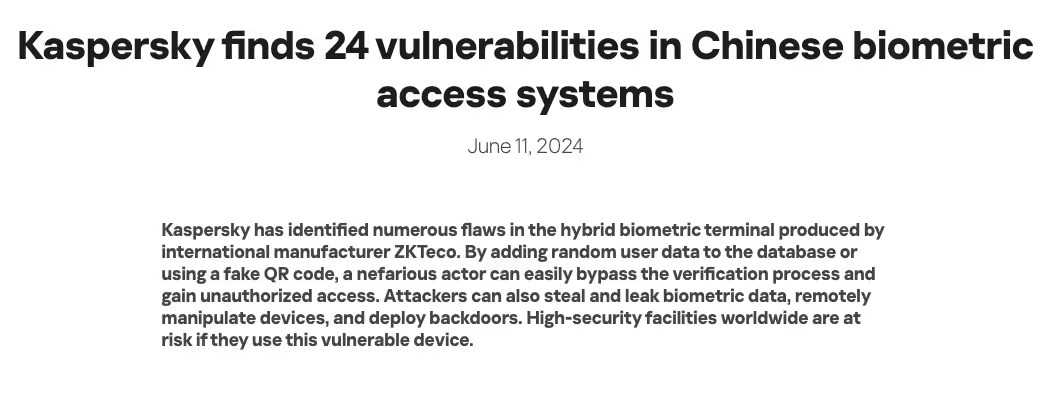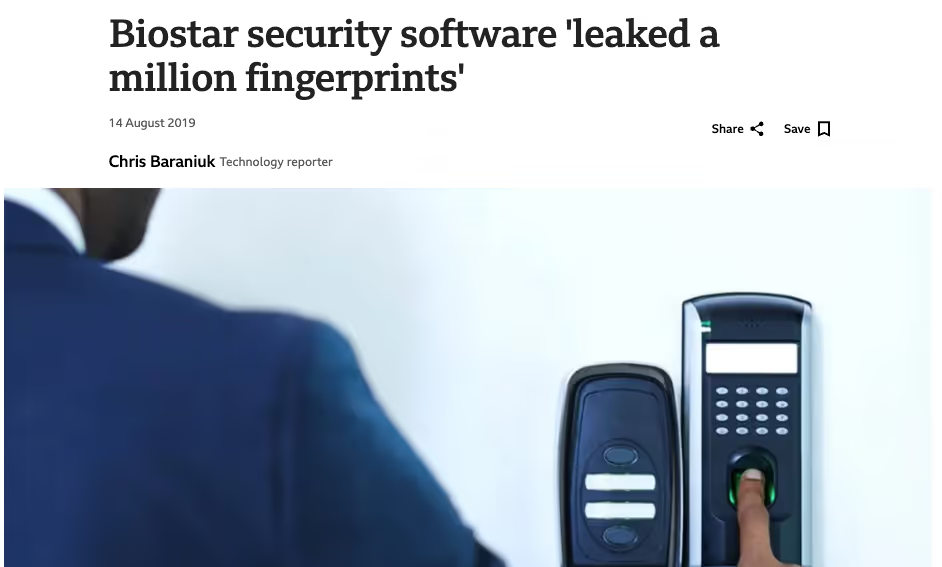Securing Biometric Authentication in SaaS Applications
A step-by-step guide for engineering and security leaders on implementing biometric login in SaaS apps securely, with proven practices for testing, fallback design, and compliance readiness.
Biometric authentication (fingerprint, face or iris recognition, voice, behavioral traits, and others) is becoming a common feature in SaaS applications. Companies use it for user logins, KYC verification, privileged operations, and device access. The push toward passwordless authentication and multi-factor security makes biometrics attractive: they combine user convenience with stronger assurance.
The challenge is not the idea of biometrics, but the implementation. Poor storage, weak spoofing protection, and insecure fallback systems can make biometrics no safer than passwords. Below we explore recent vulnerabilities, the risks they highlight, and the top practices for reducing exposure.
Real-World Biometric Vulnerabilities
1. Windows Hello for Business Bypass
In 2025, researchers showed that with local administrator access, attackers could tamper with biometric templates stored on a device so the system would accept their fingerprint or face. Microsoft’s Enhanced Sign-In Security (ESS) mitigates the flaw, but only on newer hardware.

2. ZKTeco Biometric Terminals (2024)
Kaspersky uncovered dozens of bugs in biometric terminals, including SQL injection, command execution, and path traversal. These terminals, used for physical access, often tie into enterprise networks and SaaS systems.

3. Suprema Biostar 2 Breach (2019)
A centralized database holding millions of fingerprint and face templates was leaked. Unlike passwords, biometrics cannot be reset, making this type of breach permanently damaging.

4. Fingerprint Driver and Wallet Flaws
Researchers found issues in Synaptics drivers and SGX wallets that exposed biometric templates and allowed attackers to exfiltrate sensitive data, including cryptocurrency wallet details.
5. Dark Web Exposure and Privacy Risks
Biometric data has surfaced on underground markets. Many systems store templates unencrypted or with weak controls, exposing users to long-term identity risks.
6. Template Poisoning Attacks
Academic research shows that attackers can gradually “drift” biometric templates by exploiting update mechanisms, ultimately getting their own features accepted as valid.
Here is a video that explains how secure is Biometric Authentication
Where Implementations Fail
- Weak template storage: Templates stored in plaintext or without secure hardware protection are easy targets.
- Local privilege issues: With admin access, attackers can bypass biometric checks.
- Spoofing and liveness gaps: Simple photos, masks, or molds can bypass weak sensors.
- Template poisoning: Systems that adapt to user changes can be silently hijacked.
- Supporting bugs: APIs, firmware, or apps often contain injection or validation flaws.
- Poor fallback design: Insecure recovery mechanisms can negate biometric security.
- Regulatory risk: Mishandled biometrics trigger privacy fines and reputational damage.
Seven Practices to Reduce Biometric Risk
- Use secure hardware for storage
Protect templates with TPMs, Secure Enclaves, or HSMs. Avoid centralized storage wherever possible. - Apply strong template protection
Encrypt data at rest, use non-invertible transformations, and never store raw images unless strictly required. - Implement liveness detection
Add anti-spoofing checks like blood flow detection or blinking. Consider multi-modal biometrics for higher assurance. - Harden local devices
Limit admin privileges, enforce secure boot, and keep firmware and OS patches current. - Audit template updates
Log and verify every update. Block silent changes that attackers could exploit for poisoning. - Provide secure fallback paths
Support recovery with PINs or tokens, but avoid weak fallbacks that attackers can exploit. - Secure the full stack
Protect firmware, APIs, mobile apps, and network transport with strong input validation, TLS, and regular testing.
Current Trends
- The Windows Hello bypass in 2025 shows how even established platforms can be tricked with template manipulation.
- The persistence of nOAuth-style vulnerabilities in SaaS apps proves that weak identity flows undermine biometrics, even with MFA enabled.
Checklist for SaaS Teams
- Storage: Are templates protected by secure hardware and encryption?
- Endpoint security: Is local privilege escalation blocked?
- Spoofing tests: Have you validated sensors against masks and photos?
- Template updates: Do you audit and monitor changes?
- Fallbacks: Are recovery mechanisms resistant to abuse?
- APIs and firmware: Are all components tested for common vulnerabilities?
- Privacy: Do you comply with GDPR, CCPA, and data minimization standards?
How Software Secured Can Help
At Software Secured, we specialize in finding and fixing these risks before attackers exploit them.
- Penetration Testing: We replicate real-world attacks against biometric endpoints, APIs, and supporting systems to uncover exploitable flaws.
- Secure Code Review: We analyze how biometric templates, update processes, and fallbacks are handled at the code level to eliminate design weaknesses.
If you’re adding biometrics to your SaaS application, or want to validate that your current implementation is safe, our team can help. Secure and user-friendly biometrics are possible, but only with disciplined testing and strong code practices.

.avif)


.avif)
